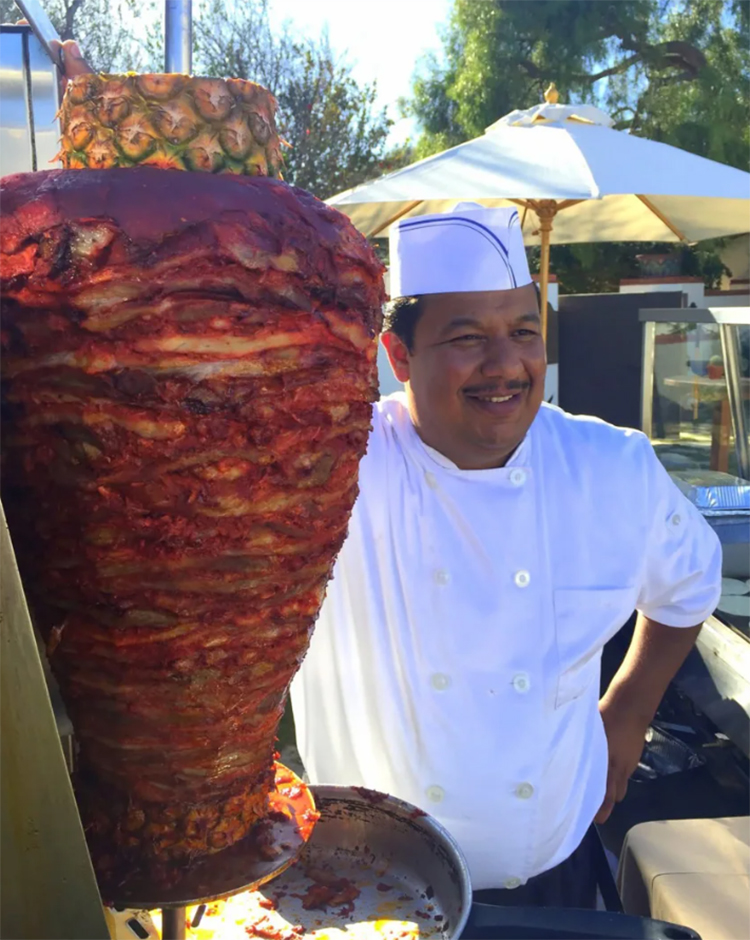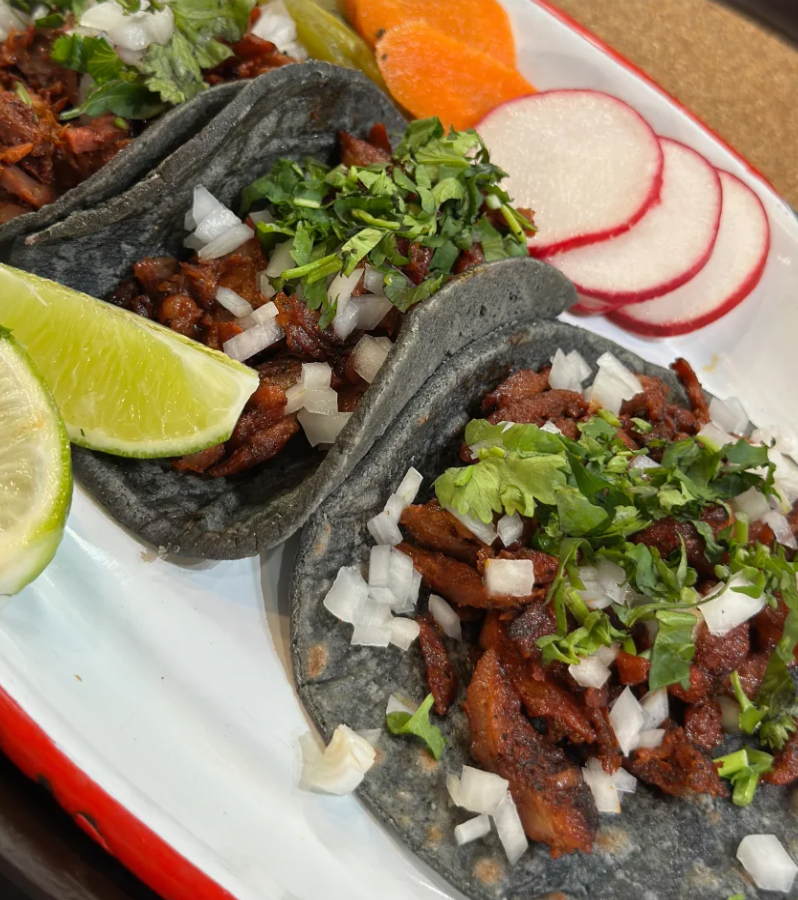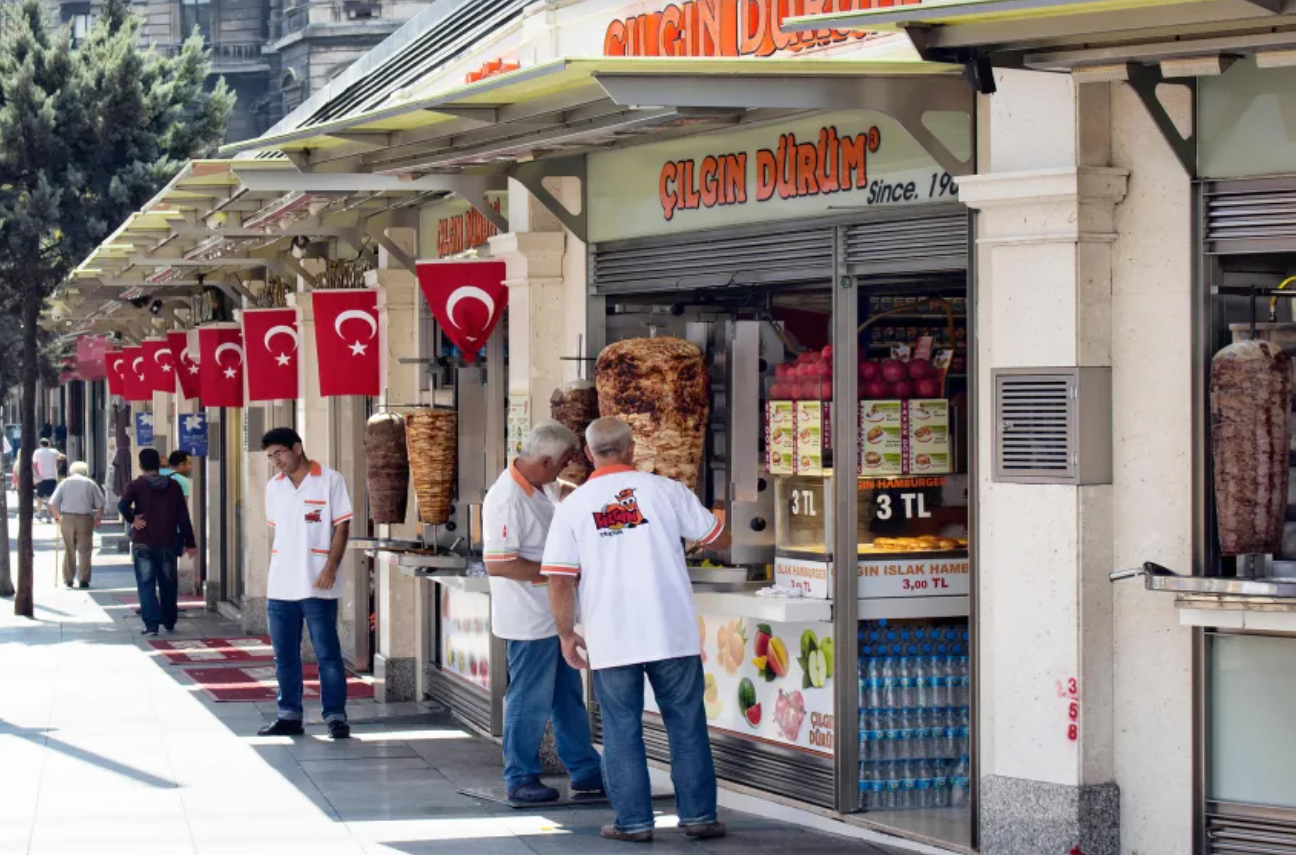Even on his days off, Raul Morales, the renowned Mexico-born chef and owner of Taqueria Vista Hermosa in Los Angeles, is recognized by fans. During a recent visit to Universal Studios Hollywood, he was waiting in line when he heard people shouting his name.
He's a third-generation maker of tacos al pastor, a dish featuring flavorful marinated pork shaved from a vertical rotisserie, served on tortillas. This method is similar to how Turkish döner kebab is prepared.
"Wherever there's a spike or a sword, there's roasted meat," he said.
 |
Raul Morales with his skewered meat in the US. Photo: CNN |
Raul Morales with his skewered meat in the US. Photo: CNN
Cooking meat on skewers is likely one of humanity's oldest culinary techniques, according to food historian Ken Albala, a professor at the University of the Pacific.
Feasts featuring skewered meat are mentioned in the Greek epics the Iliad and the Odyssey, according to Susan Sherratt, professor of Eastern Mediterranean archaeology at the University of Sheffield. Iron skewers used for grilling, found in warriors' tombs, appeared in the Aegean region as early as the 10th century BC.
"When celebrating a victory, people would sacrifice animals to the gods – it was like a big barbecue," Sherratt said.
Grilling meat isn't simply about hanging it over a fire. Meat is best cooked adjacent to the heat source, not directly above it, for better flavor.
Initially, these feasts might have involved whole animals or large cuts. But centuries ago, Ottoman Empire chefs developed a new technique: stacking thin slices of raw meat on a skewer to form a thick, cone-shaped mass that cooked as it rotated.
A 1620 manuscript commissioned by Ottoman statesman Hafız Ahmed Paşa depicts a chef carving meat from a layered rotating skewer, according to Mary Işın, author of Bountiful Empire: A History of Ottoman Cuisine. Paintings depicting lavish outdoor feasts suggest this dish was enjoyed during royal picnics.
"In the paintings, you can see that it was a dish for the aristocracy," Işın said.
15th-century Ottoman texts refer to this roasted meat as çevirme kebabı (rotating kebab). The recipe spread throughout the Ottoman Empire, which stretched from Central Europe to North Africa and the Arabian Peninsula.
The term "çevirme" later entered Arabic and English as shawarma; in Turkey, it was replaced by döner, also meaning "rotating."
Over the centuries, skewered meat transitioned from an aristocratic delicacy to a popular street food. By the early 19th century, visitors to Istanbul praised döner as the country's best dish.
 |
Tacos in Morales's restaurant. Photo: CNN |
Tacos in Morales's restaurant. Photo: CNN
As people migrated to other continents, they brought the recipe with them, adapting it to local ingredients and giving it different names. In Mexico, the Lebanese community created tacos arabes in the 1930s, which later evolved into tacos al pastor, using pork marinated with pineapple, achiote, and chili peppers.
Döner crossed into Europe and then returned. In the 20th century, Turks brought döner to Greece (where it's called gyro), and then to Germany after World War II. Today, Berlin alone has around 1,000 döner shops, with total European sales reaching 3.5 billion euros annually.
In Turkey, döner continues to evolve, from a street food to a restaurant dish, served to thousands daily.
"Good food always travels far," Işın said.
From its Ottoman origins, this culinary tradition has spread throughout the Middle East, Europe, across the Atlantic to Mexico, and around the world.
 |
Kebab shops in Istanbul. Photo: Alamy |
Kebab shops in Istanbul. Photo: Alamy
Raul Morales has followed a similar path. He began his apprenticeship at age 7 at his uncle's taco stand in Michoacan, Mexico. In 2001, after moving to Los Angeles, Morales opened Taqueria Vista Hermosa, marinating his own meat with pineapple, orange, and grape juice, along with local spices. In 2003, the Los Angeles Times named his tacos al pastor the best in the city, securing a steady stream of customers ever since.
Today, the family al pastor recipe Morales learned from his uncle can be found everywhere – from Argentina and Australia to the UK and even the Arctic region of Finland.
Morales isn't surprised. For him, al pastor is a living legacy, transcending borders and conquering global palates.
"People really love it," he said.
Anh Minh (CNN)












